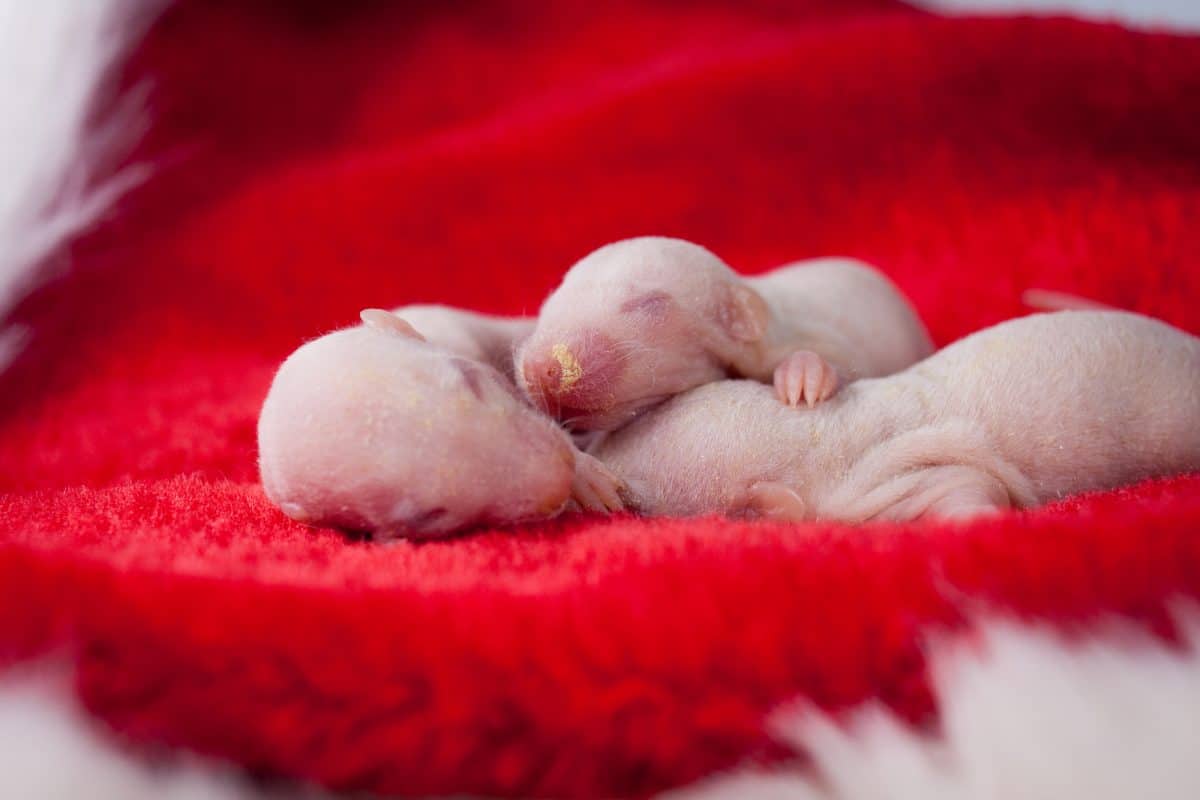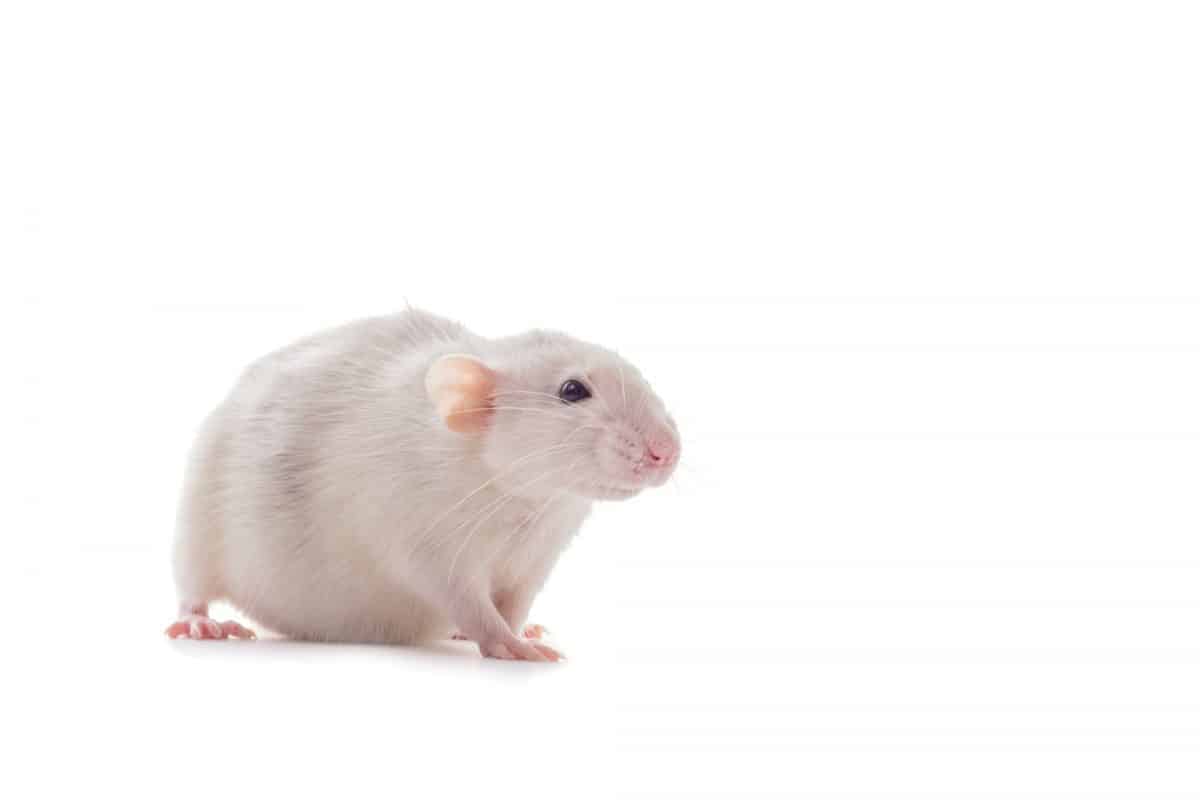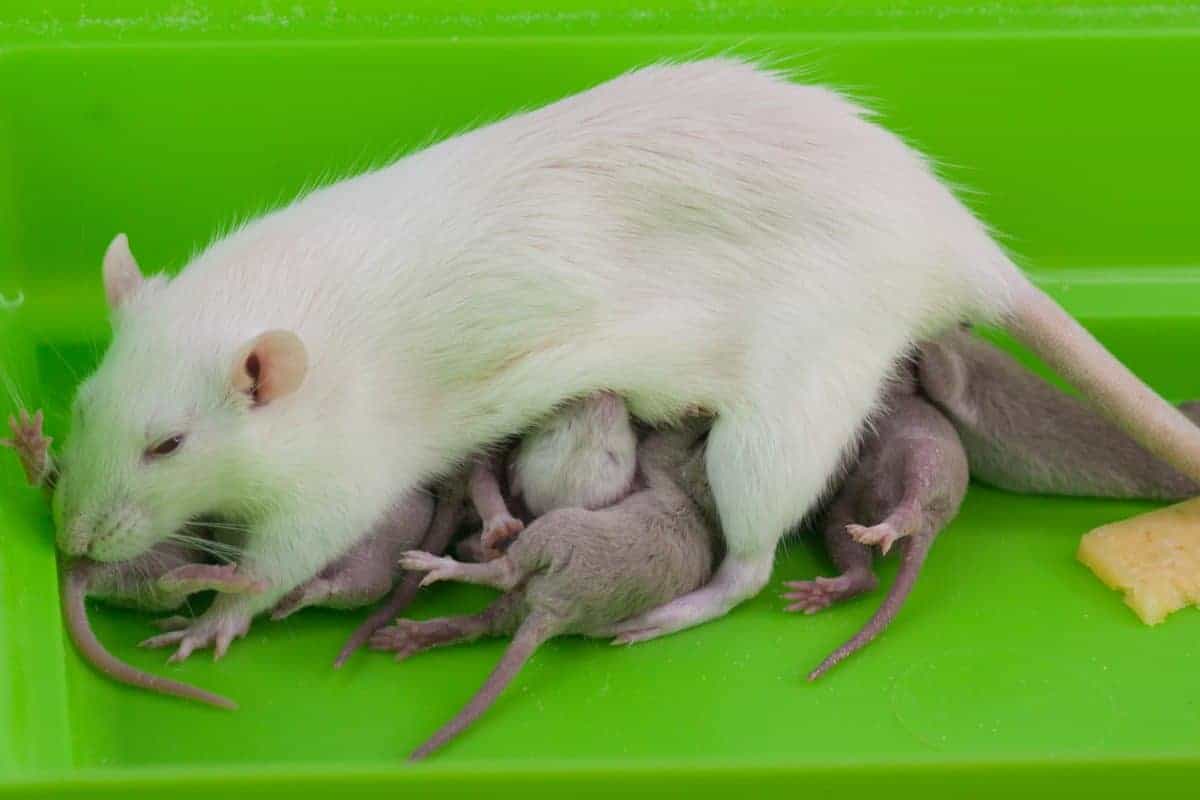Rat Blocks What Do You Feed Baby Rats
Baby Rats – Caring for pregnant rats and their babies
Last Updated : July 18, 2022
Written by
If you ever find yourself in a situation where you need to care for baby rats, there are certain guidelines you must follow if you want them to mature in a safe and healthy way.
Whether you're breeding fancy rats for the first time, your pet rat accidentally got pregnant, or you've found baby wild rats without their mom, you'll find all the care tips you need for pregnant rats and baby rats in this guide.

Care Tips for Baby Rats
Pregnancy
Rat gestation periods last between 21-23 days, with an average of 22 days. After two weeks, you may notice the mother's abdomen expanding, and her mammary glands will enlarge.
During pregnancy, a mother's nutrition is vital – she needs to eat well to avoid being stressed or underfed when she gives birth. Underfed mothers could kill and eat their babies. Pregnant or nursing rats may also undergo personality changes due to hormones.
They may be more aggressive or less playful, but will typically regain their former personality after mothering duties are over.

Remove other rats
Only allow other female rats and neutered male rats in the same cage as a birthing mother. Immediately after giving birth, female rats go into heat so if there's a male around, they could become pregnant again immediately.
If another female rat remains in the cage, make sure they aren't also pregnant or birthing, as two nursing mothers in the same cage could steal each other's babies. Mother rats will easily allow a baby that's not her own to nurse, which makes fostering motherless rats easy, but may lead to competition over babies in the same cage.
Also, never introduce other pet rats into the same cage with a pregnant mother as she will become aggressive.
The birth process
Rats give birth for up to two hours, delivering one pup every 5-10 minutes. Litter sizes range from 6-13 pups. You'll know once labor has started because the rat will excrete a bloody discharge from her vagina.
Then, the contractions will start. The mom will clean the birth sac off of each pup by licking them clean. If the pup is weak or dead and doesn't make any squeaking noise after it comes out, the mother may eat it.
Once labor is over, let the mother rat take care of the babies and don't try to handle them for a few days, unless there's a problem.
Encountering problems during birthing
If your rat is in labor longer than two hours, then she has a problem. One of the pups may be stuck in the birth canal, so you can gently massage her abdomen or lubricate the birth canal with baby oil to help get it out.
The mother might die during a difficult birth, or one of the fetuses may remain inside her uterus. After a mother survives a difficult birth, she may need antibiotics from a veterinarian to prevent infection.
If a mother rat does die during childbirth, you should try to find another nursing mother to foster the little ones.

Caring for Baby Rats – A Timeline
- Days 1-4: For the first few days, you should mostly let the mother do her thing, but you can check on the babies with a stick while the mother is outside the cage. During this time, you'll want to check for milk bellies on the baby rats, indicating they're well-fed.
- Days 5-7: After five days you can start taking the babies out and handling them gently. Whispering to them will help them socialize and get used to humans. They still don't have fur and their eyes and ears are still closed, so you must be very careful with them.
- 1 Week: The one-week mark is usually when baby rats start venturing out of the nest. They are still blind, so the mother will go get them and bring them back.
- 2 Weeks: After two weeks, baby rats will finally open their eyes and ears. They've also grown fur and tend to look like mice. They'll keep trying to escape the nest and explore, but their mom will still bring them back.
- 3 Weeks: At 22 days baby rats can start eating solid food, and will nurse only once per week.
- 4 Weeks: Between four to four and a half weeks, the females and males should be separated. If not, the male babies could impregnate their mother or sisters.
- 6 Weeks: The six-week mark is when you can safely start re-homing baby rats. If you decide to keep them, you'll need to make sure you have enough space for them all. When putting the male babies with their father, introduce them slowly as the father will try to defend his territory.
- 12 Weeks: Young rats reach sexual maturity
- 6 months: Now coinsidered adult rats.
What Do Baby Rats Look Like?
When they're first born, baby rats are very tiny and very pink. They also have their eyes closed and their ears haven't opened properly yet. After five days, you might start to see some coloration on your pups' skin.
It's pretty easy to tell the difference between a female and a male baby rat. Male newborn baby rats will have a small set of testicles just below their tail.
By 15-22 days old, they'll usually have their full coat of fur, their eyes are open, and their ears perk up. At this stage, baby rats tend to resemble mice, but there are a few ways you can tell them apart (see below).
By six weeks, baby rats haven't quite reached their full size, but you have a good idea of what they'll look like as adults.

How to tell a mouse from a baby rat
An adult mouse has larger ears and a longer tail than young rats. Additionally, a young rat has larger feet than a mature mouse, and a young rat's head is larger in proportion to its body than a mouse's head is. Mice also tend to be light grey or brown, with a lighter shade on their bellies.
What Should I Do if I Find a Wild Baby Rats?
If you have found baby rats without their mother, or if your female rat dies in childbirth, you should act quickly.
- Look for the mom: Before taking the babies anywhere, ensure the mom has either abandoned them or died in childbirth. If you see a nest without a mom, leave it for a few hours and come back to check later – the mom was likely waiting for you to go away before returning to her babies.
- Take the baby rats to a rat rescuer or breeder: If you don't want to care for the rats yourself, you should take them to a rat rescuer or breeder. The breeder may have a mother already nursing, so she can foster the abandoned babies. If there's no foster mom available, the breeder or rescuer will know how to hand-feed the abandoned litter.
- Hand-feeding baby rats: You may decide to hand-feed abandoned pups yourself, but know that they need milk every 3-4 hours (including at night) for two weeks straight. You'll also need a milk substitute, a way to feed them, bedding, and a heat source
Newborn baby rats eat milk for about 3 weeks, after which they'll be able to move onto solid foods - Toileting: If you want to care for motherless pups yourself, you'll also have to help them urinate and defecate, as they can't do it on their own.
Conclusion: Caring for Baby Rats
If a pet owner, taking care of your pet rat during pregnancy, and subsequently caring for rat newborns are not easy tasks. You could quickly get overwhelmed if you've never handled little ones before, so always do your research and ask for the assistance of an experienced carer, or other rat owners, if you need it.
Source: https://littlefurrypets.com/baby-rats/
0 Response to "Rat Blocks What Do You Feed Baby Rats"
Post a Comment